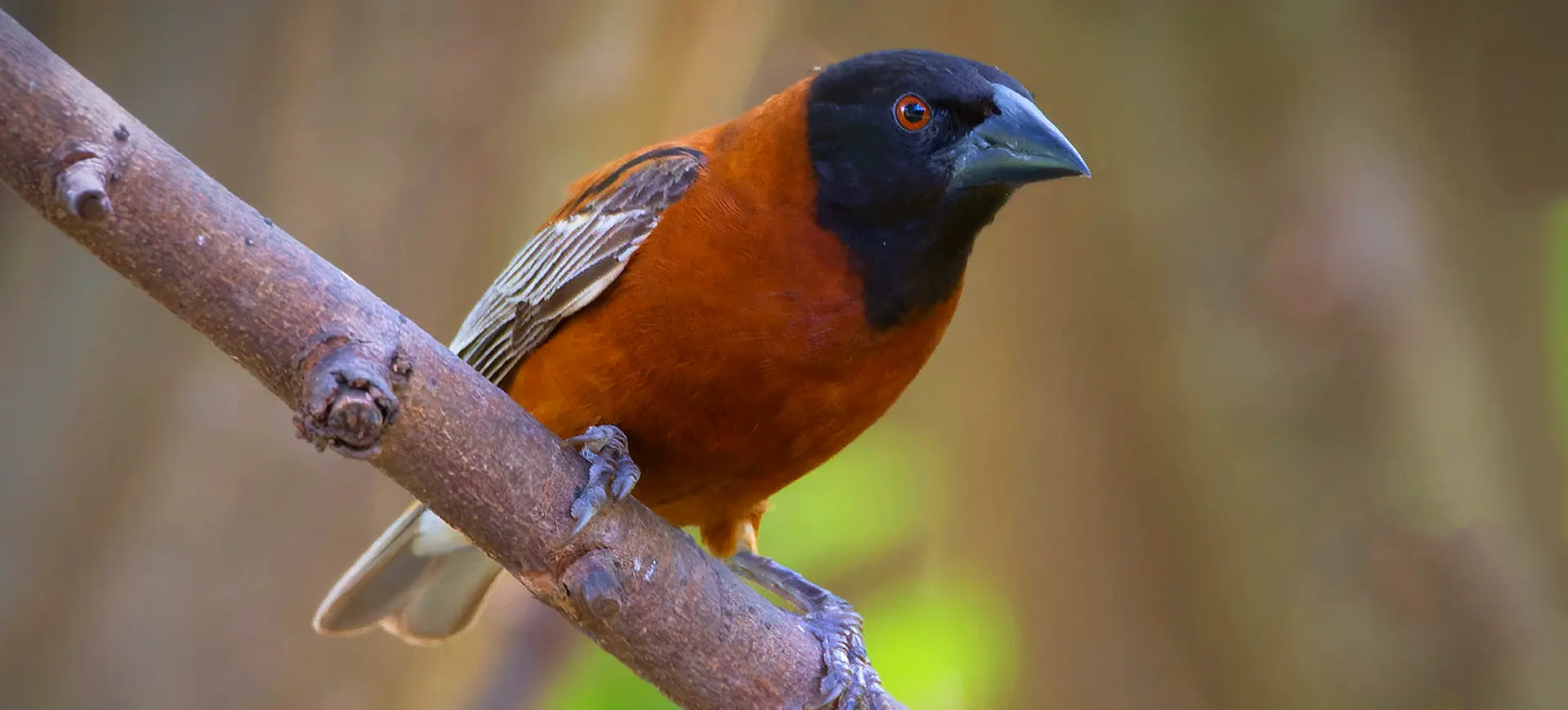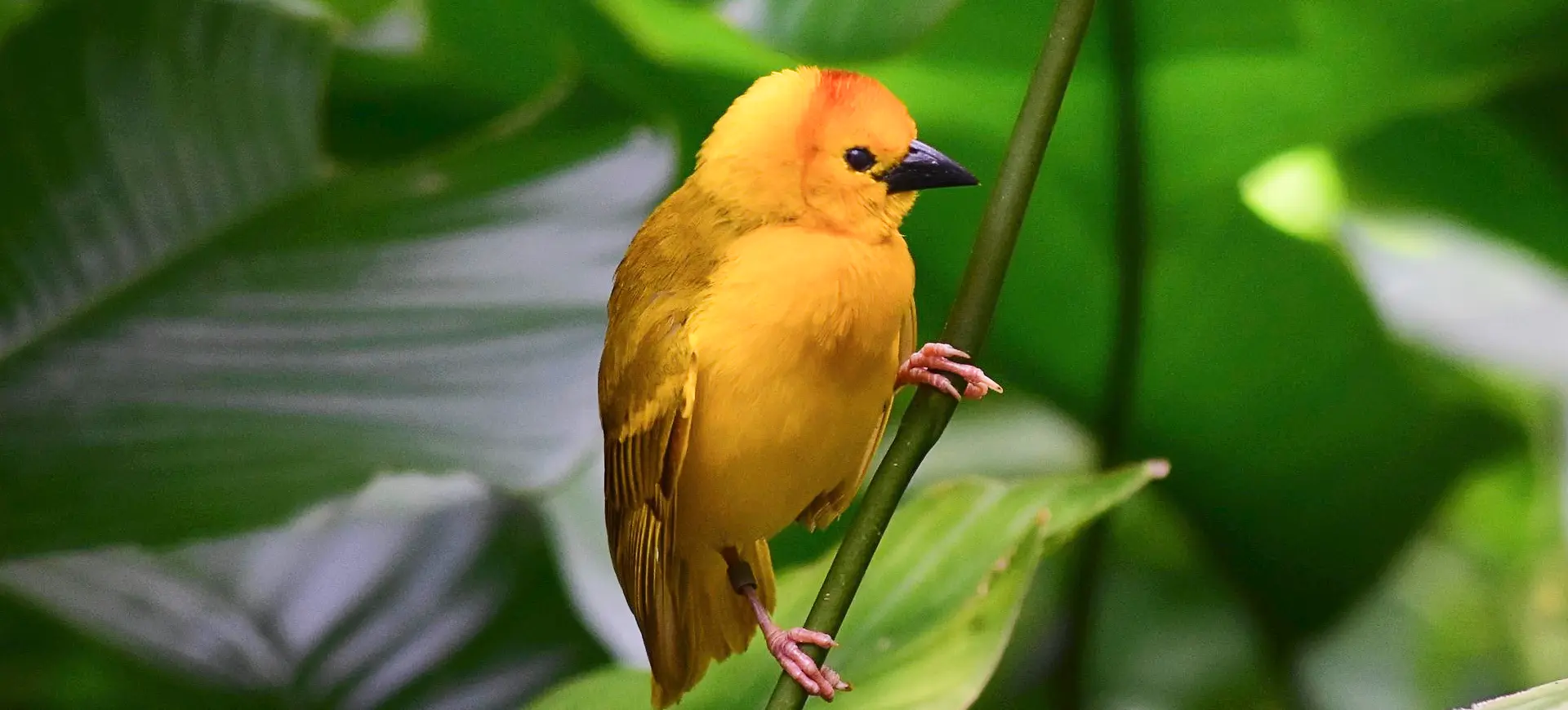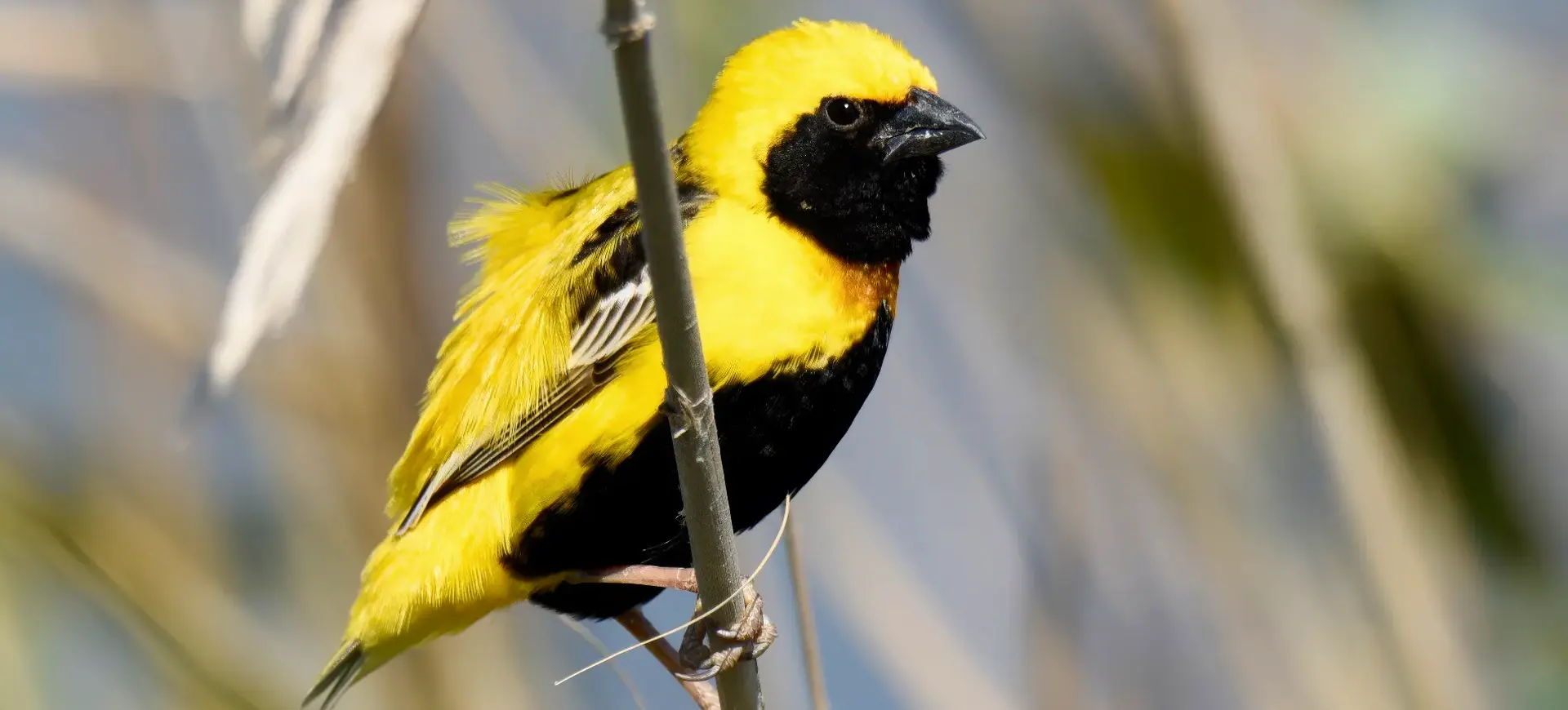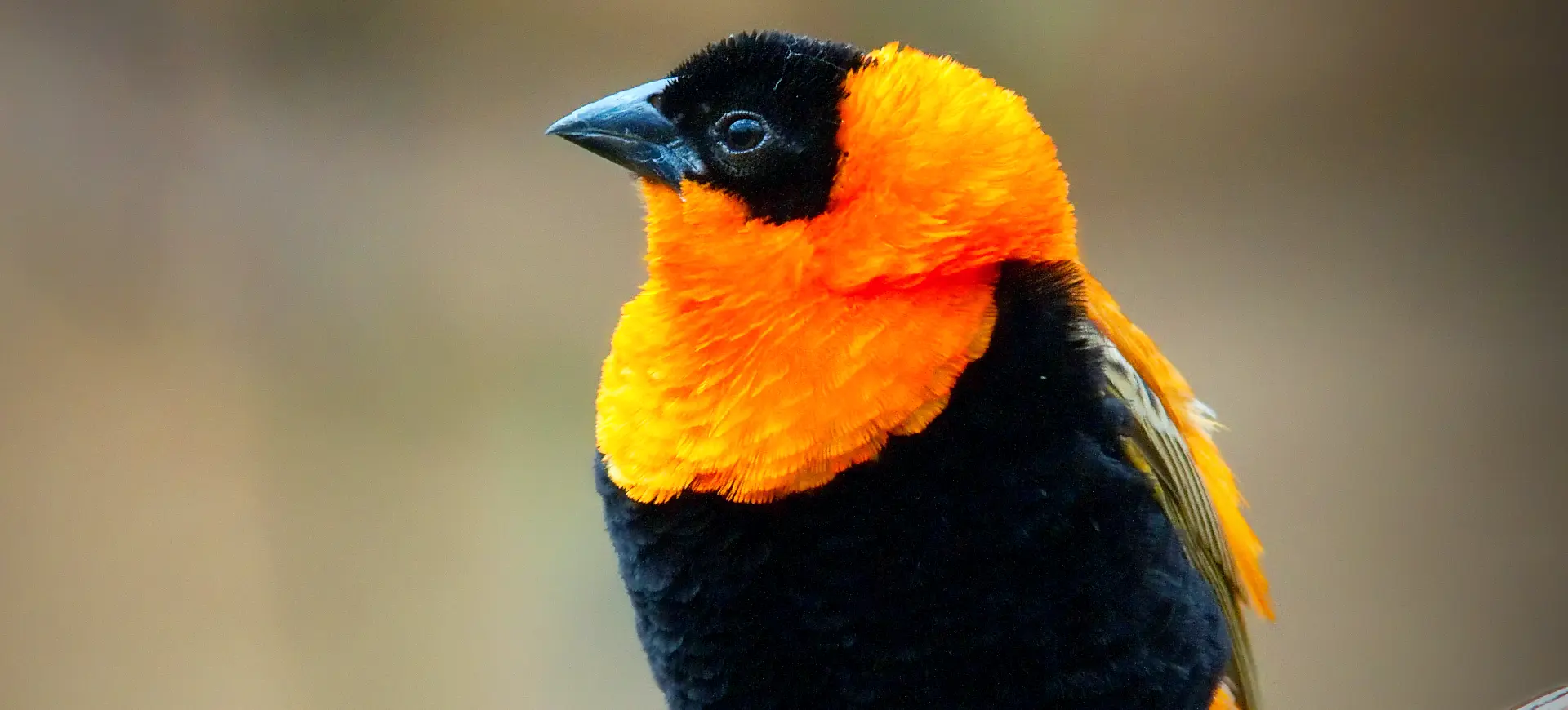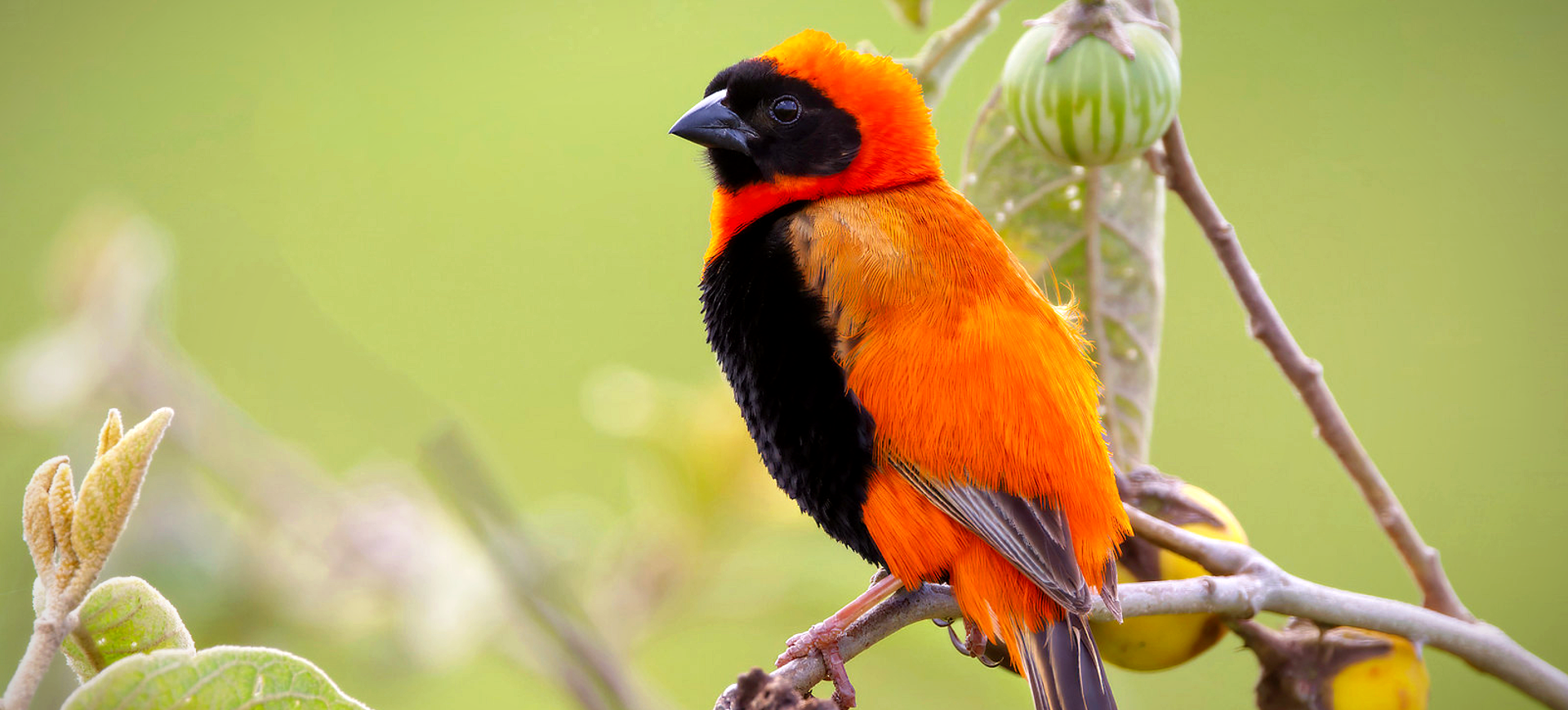Overview
The White-headed Buffalo Weaver, scientifically known as Dinemellia dinemelli, is a distinctive bird species found in the savannas and drylands of East Africa. It is known for its striking appearance and unique nesting habits. The species exhibits sexual dimorphism, with males being larger and more brightly colored than females. Males have a predominantly black body with a white head and rump, while females are duller with more brownish tones.
These birds are named for their habit of following African buffalo herds, feeding on the insects disturbed by the buffalo’s movement. They are social and gregarious, often seen in noisy groups. Their diet primarily consists of insects, seeds, and occasionally small fruits, making them important for seed dispersal and pest control in their ecosystems. White-headed Buffalo Weavers are also known for their elaborate and communal nesting structures.
The nests of White-headed Buffalo Weavers are large, coarsely built structures made from twigs and grasses. These nests are usually constructed in the forks of trees and can house several pairs at once, each with its nesting chamber. The communal aspect of their nesting behavior is a key characteristic of the species, providing both safety in numbers and increased breeding opportunities.
Taxonomy
Kingdom
Phylum
Class
Order
Family
Genus
Species
Type
Physical Description:
White-headed Buffalo Weavers are medium-sized birds with a robust and stocky build. Adult males are notable for their stark white head and underparts, contrasting sharply with their black back, wings, and tail. They also have a distinctive white rump, which is visible in flight. The bill is stout and conical, well-adapted for seed-eating, and its legs are strong and well-suited for foraging on the ground.
Females and juveniles are less striking, with more brownish and grey plumage and less pronounced white areas. Both sexes have fairly short and square tails and rounded wings, providing strong and direct flight. The overall appearance of the White-headed Buffalo Weaver is adapted for a life spent foraging in both trees and on the ground, as well as for building their large communal nests.

Lifespan: Wild: ~10 years || Captivity: ~10 years

Weight: Male: 1.8-2.1 ounces (50-60 g) || Female: 1.4-1.8 ounces (40-50 g)

Length: Male & Female: 7.9-9.1 inches (20-23 cm)

Wingspan: Male & Female: 11.8-13.8 inches (30-35 cm)
Characteristic:
Native Habitat:
The White-headed Buffalo Weaver is native to the savannas and dry bushlands of East Africa. Its range extends from southern Ethiopia through Kenya and into northern Tanzania. These birds favor open, dry habitats with sparse tree cover, typically in regions with prevalent acacia trees. The presence of these trees is crucial, as they provide both food and nesting sites for the species.
In addition to natural habitats, the White-headed Buffalo Weaver is found in agricultural and rural landscapes. This adaptability to human-altered environments has helped the species maintain stable populations, even as natural habitats face pressures from human activities. They are often seen in groups, foraging in fields or around villages, indicating their comfort in human proximity.
Biomes:
Biogeographical Realms:
Continents:
Diet:
Diet & Feeding Habits:
The White-headed Buffalo Weaver is omnivorous, with a diet that includes a variety of insects, seeds, and fruits. This varied diet is essential for the bird’s nutrition and plays a role in the ecosystem, aiding in pest control and seed dispersal. Insects such as termites and beetles constitute a significant part of their diet, especially during the breeding season when protein is crucial for the development of chicks.
These birds exhibit foraging behavior on the ground and in trees, demonstrating their adaptability and resourcefulness in different environments. They often hopped along the ground, turning over leaves and debris to uncover insects. In trees, they are agile, moving through branches and leaves, often hanging upside down to reach food. Their strong beaks are well-adapted for cracking seeds and dealing with various food sources.
Mating Behavior:
Mating Description:
The mating behavior of the White-headed Buffalo Weaver is characterized by the construction of large, communal nests, which are central to their breeding strategy. Males play a primary role in building these nests, using twigs and grasses, typically acacias, to create complex structures in trees. These nests are for breeding and roosting sites, and a single tree can host multiple nests.
During the breeding season, males become more vocal and display their plumage to attract females. The nests are also part of the display, with males often seen hanging from their nests, flapping their wings, and calling to draw the attention of potential mates. Once a female selects a mate, she will join him in the nest to lay and incubate eggs. The communal aspect of the nests means that several pairs may breed nearby, creating a bustling and noisy environment.
Reproduction Season:
Birth Type:
Pregnancy Duration:
Female Name:
Male Name:
Baby Name:
Social Structure Description:
The White-headed Buffalo Weaver exhibits a highly social and communal lifestyle, often seen in flocks. These flocks can be quite large, especially when congregating around communal nesting sites during the breeding season. The social structure is characterized by a loose hierarchy, with dominant males often controlling access to prime nesting sites.
Outside the breeding season, these birds exhibit social behaviors, foraging in groups and roosting together in communal nests. This social structure plays a vital role in their survival, offering advantages such as increased vigilance against predators and improved foraging efficiency. The communal nests also provide safety and warmth, especially in cooler temperatures.
Groups:
Conservation Status:
Population Trend:
The White-headed Buffalo Weaver has a stable population across its native range in East Africa. This stability can be attributed to the bird’s adaptability to various habitats, including those altered by human activities. The species has shown an ability to thrive in agricultural areas and other human-dominated landscapes, which has helped buffer against the loss of natural habitats.
Despite being widespread within its range, ongoing monitoring of population trends is essential. This is especially important considering the rapid environmental changes in many parts of Africa. The adaptability of the White-headed Buffalo Weaver may help ensure its continued survival, but habitat loss and degradation remain potential threats that could impact future populations.
Population Threats:
The primary threats to the White-headed Buffalo Weaver include habitat loss and degradation due to agricultural expansion and deforestation. Although the species has shown adaptability to human-altered environments, extensive habitat changes can still pose risks. The removal of acacia trees, essential for their nesting, can particularly impact local populations.
Another potential threat is the use of pesticides in agricultural areas, which can reduce the availability of insects, a significant part of their diet. Climate change also presents a long-term threat, potentially impacting their habitats and food sources. However, the species’ current stable status suggests it has been able to withstand these pressures to some extent.
Conservation Efforts:
The White-headed Buffalo Weaver’s conservation efforts are minimal, largely due to its status as a species of Least Concern and its stable population trend. However, general conservation measures that benefit broader biodiversity in their habitats, such as sustainable agriculture practices and habitat protection, indirectly benefit this species.
Efforts to preserve acacia trees and other key components of their habitat are crucial for the species’ long-term survival. Additionally, education and awareness programs in local communities can help mitigate impacts from human activities, ensuring that these birds continue to thrive in natural and human-modified environments.
Additional Resources:
Fun Facts
- The White-headed Buffalo Weaver is named for its habit of following buffalo, feeding on insects disturbed by their movement.
- Unlike many other weaver species, both male and female White-headed Buffalo Weavers are similar in appearance.
- Their nests are often reused year after year, with new material added each breeding season.
- These birds are known for their loud and varied calls, which include whistles, chatters, and harsh notes.
- White-headed buffalo weavers are often associated with other bird species, including other weavers and even birds of prey.
- Rapid wingbeats and short glides characterize their unique flying style.
- The communal nests of this species can become quite large and heavy, sometimes causing the branches they are built on to break.
- In addition to insects and seeds, these birds also feed on small fruits, playing a role in dispersal.
- They are known to drink water by scooping it up with their beak, unlike many other bird species that sip water.
- The White-headed Buffalo Weaver’s adaptability to various environments makes it an excellent example of a resilient bird species in the face of habitat changes.









